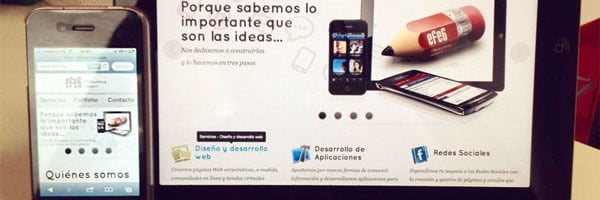Everywhere we look, an electronic display is not far from our field of vision. From the touch sensitive surface of our mobile phone, to the billions of web pages that we see on our computer’s screen every day, everything we see has been carefully designed. Responsive web design, commonly abbreviated to RWD, is all about how we see things. Here’s a guide to Responsive Web Design, and the best principles and aspects of its sphere.
The Best of Responsive Web Design
Up to Speed

It’s all about your viewing pleasure
Before we look at what makes up the best aspects of Responsive Web Design, it would be a good idea to get an understanding of what it is! RWD is about creating websites that respond to where they are being displayed. Responsive Web Design is all about using programming language, and innovation, to make a less complex, more efficient, user friendly viewing experience for you – the user!
Behind every program you use, every letter you type on your keyboard, and every swipe of your finger, are millions upon millions of codes. These codes are actually different programming languages called ‘scripts’. Designers use these scripts to communicate with their technology, and give instructions to whatever device you’re using. Whether it is your smart-phone, or a new computer, everything has been designed using these incredible scripts.
All of the Elements
The best elements of Responsive Web Design are those that create the best viewing experience with a minimum of scrolling or moving around the screen. The first, and most important key principle of RWD is that the user doesn’t have to navigate by resizing or panning and moving around; everything they need to see is easily and quickly available on their screen.
Our second top principle in the Responsive Web Design best of is called ‘The fluid grip concept’. Imagine that everything you see on a website is laid out on a grid and that when you need to see a site on a smaller or larger screen, these grids scale up and down. The sizing for a website is so important, whether you’re watching on a huge projector or a 4″ mobile. The fluid grip concept means that sizing isn’t defined by points or pixels, but instead by percentages. Using percentages makes for a much more adaptable and scalable site.
On the Go

Good RWD lets you see things simply, no matter what you’re using.
When you’re designing for web content, the experts in the field know that there are a huge number of sizes and shapes of screens that their content could be viewed on! This is where their clever script comes in. The designers and programmers write their code so that their content will automatically know what size of display it is being viewed on, and scale itself accordingly – how amazing is that? This means that you could be reading this article on a laptop, smart-phone or tablet, and it would be just as easy to find and view everything you need!
Perhaps the most important aspect of RWD is how this is possible. Media queries are the parts of programming language that allows the page to adapt to its display. The site will see what the width of your browser is, and then scale everything to best fit that size. Even images are flexible, being scaled in relative percentages to stop them taking over your screen!
Conclusion
There are many more concepts and strategies that Responsive Web Design is working on, and the technology is bringing the best out of our viewing experience. Websites and designers are hard at work to make sure that your online adventures are the best they can be, no matter what the size or shape of the screen that you’re browsing on. Next time you browse, you can appreciate the skill that has gone into making your surfing as smooth as can be!
- Introducing the Apple AirTag - July 20, 2023
- Slavish Thinking: غلامانہ سوچ - April 27, 2017
- Android is expected to welcome BBM before October - July 21, 2013


No Comments Yet